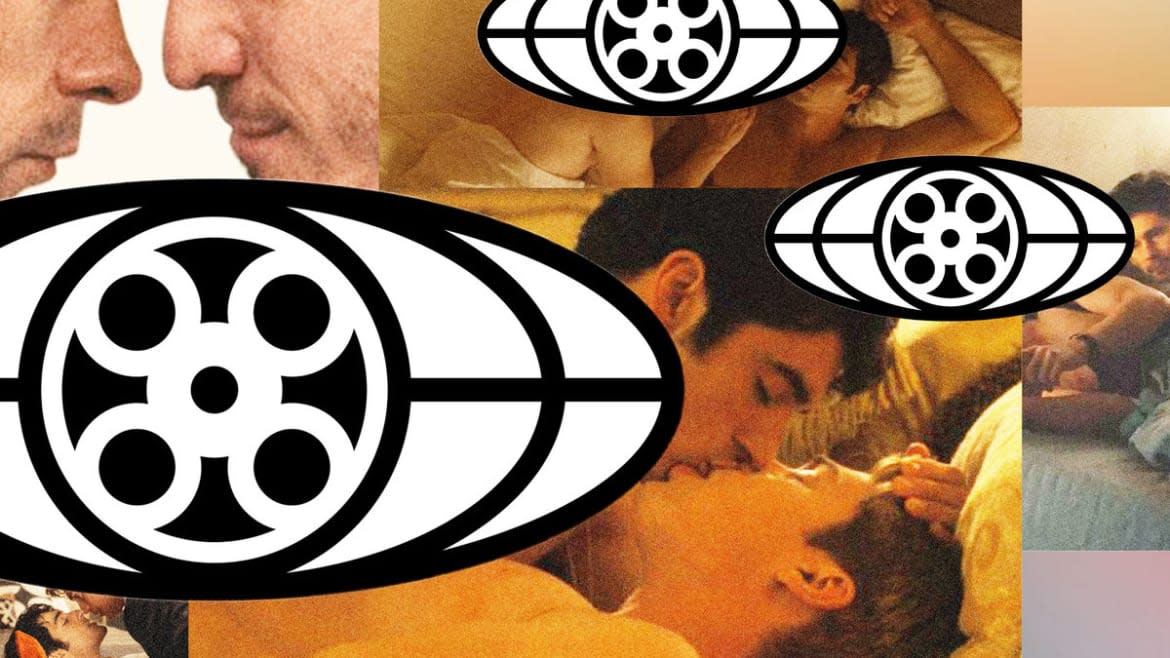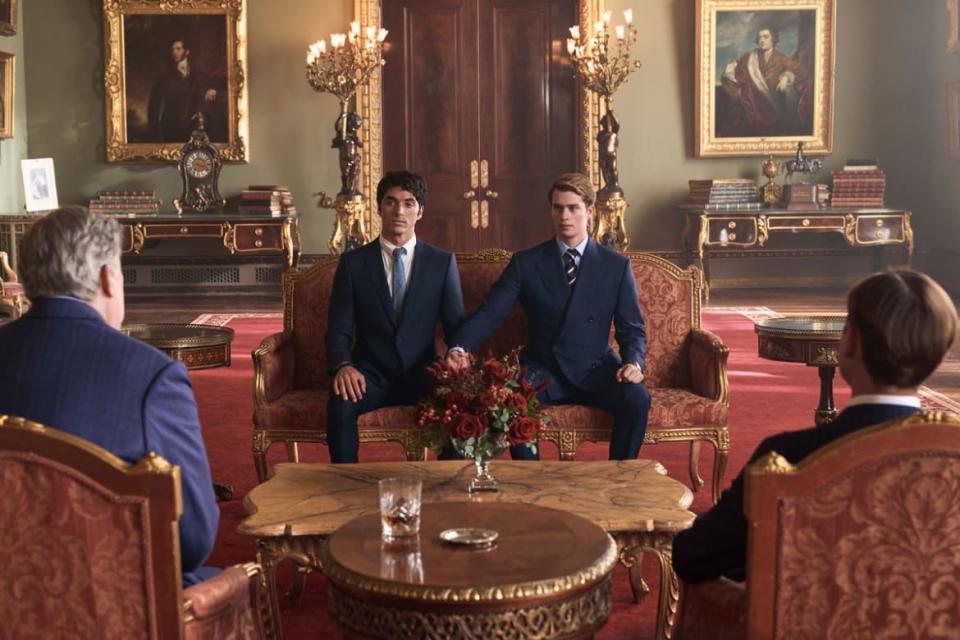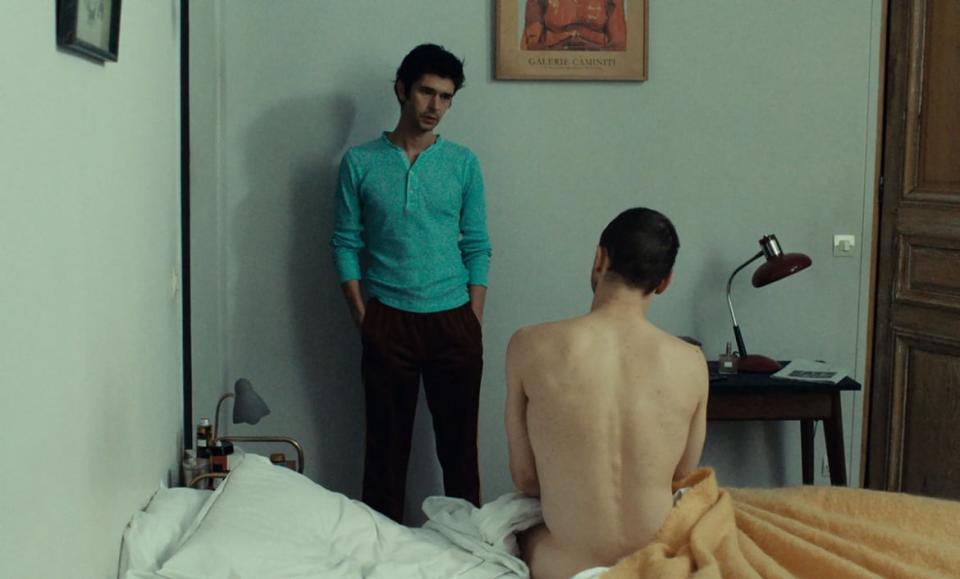Rating Movies NC-17 or R Because of Gay Sex Is Homophobic

- Oops!Something went wrong.Please try again later.
- Oops!Something went wrong.Please try again later.
- Oops!Something went wrong.Please try again later.
It seems the MPAA is in its “Don’t Say Gay” era. The organization, which assigns films a rating as a guide to their content and appropriateness for children and teenagers, controversially slapped two of this summer’s buzziest queer films with disproportionately harsh ratings—thereby reminding audiences and critics of the oft-criticized board’s history of censoring LGBTQ+ content.
This month, Prime Video’s frothy gay rom-com Red, White & Royal Blue debuted on the streaming platform with an R rating for “some sexual content, partial nudity, and language,” while the independent film Passages, which depicts a messy bisexual love triangle, received the scarlet letter of an NC-17, meaning no person under the age of 17 is allowed to purchase a ticket. The latter decision severely hurts a movie’s chances at profitability: Since the rating debuted in 1990, no NC-17 film has ever grossed more than $20 million, and many theaters won’t even show them. The top NC-17 earner of all time remains Paul Verhoeven’s Showgirls, a box-office bomb that would destroy its leading lady’s film career before eventually finding a second life as a so-bad-it’s-heavenly camp classic.
Both films’ directors have openly questioned the ratings affixed to their movies, with Red, White & Royal Blue director Matthew López arguing that their work would be treated differently by the MPAA—which stands for Motion Picture Association of America—if these stories centered the lives of heterosexuals. He’s absolutely right. In the past, the board has awarded less restrictive ratings to movies with love scenes nearly identical to the sexual content displayed in these films, yet another illustration of its historical double standard around queer sexuality. Tellingly, the first film ever given an NC-17 rating, Henry & June, drew support from the LGBTQ+ watchdog GLAAD in 1990 after it was originally given an X rating—then synonymous with pornography—for three love scenes between novelist Anaïs Nin (Uma Thurman) and June (Maria de Mederios), the wife of novelist Henry Miller. Thirty-three years after GLAAD accused the MPAA of furthering stigma by treating LGBTQ+ romances as inherently obscene, little has changed.
It’s fitting that Thurman, back then four years away from her star-making turn in Pulp Fiction, would still be at the center of the conversation over queer sex in cinema today. But in Red, White & Royal Blue, the actress is this time an observer to the nookie: Sporting an outlandish accent that’s Texas by way of Sienna Miller in Cat on a Hot Tin Roof, she plays an American president who is in the midst of her re-election campaign as her son, Alex (Taylor Zakhar Perez), falls for a British royal, Henry (Nicholas Galitzine). Adapted from Casey McQuiston’s novel, the plot is essentially gay fanfiction reimagining the early courtship between Prince Harry and Meghan Markle, but if the latter were a bisexual male college student with 1 percent body fat. The film version benefits from not taking itself too seriously, least of all during a scene where Thurman’s President Claremont, after her son comes out to her, immediately educates him on the dos and don’ts of anal intercourse and offers to get him a Truvada prescription.

Nicholas Galitzine as Prince Henry and Taylor Zakhar Perez as Alex Claremont-Diaz in Prime Video's Red, White & Royal Blue
What makes Red, White & Royal Blue a refreshing addition to the queer film canon, despite its Velveeta-levels of cheese, is that it’s surprisingly frank about the ways in which LGBTQ+ people experience intimacy. It’s amazing to compare the movie in all its heady sensuality to the neutered relationship between Mitchell (Jesse Tyler Ferguson) and Cam (Eric Stonestreet) in Modern Family, in which it took a season-long fan campaign before the couple shared a kiss on screen, which takes place in the far corner during a family discussion. The politically star-crossed lovebirds of Red, White & Royal Blue simply can’t keep their hands off each other, even finding time during a polo match for a hasty depantsing in a nearby shed. That commitment to honesty is also likely what offended the MPAA about the film: Rather than slow-dissolving away from the lived realities of queer relationships, the movie dares hold its characters’ gaze.
But what’s so infuriating about the MPAA’s decision is that for how explicit the intimacy in Red, White & Royal Blue is on paper, it’s filmed and choreographed in a way that foregrounds the characters’ emotions over their physicalities; at times, you’d almost call the lovemaking stately. The only nudity in the entire film is a passing bare bottom during a moment of comic relief, and an unclothed backside didn’t stop Thor: Love and Thunder from slipping by last year with a PG-13. Furthermore, the pivotal first hookup between Henry and Alex is filmed all but from the neck up, with its director preferring a low-lit montage of clasped hands and tender glances over the more literal aspects of rumpy-pumpy. López, a Tony-winning playwright, told NBC News that the focus on interiority was by design: “It was very important to me that we literally never lose sight of their faces.”
The Sex and Secrets of ‘Red, White & Royal Blue’
While there’s no set rule for what differentiates PG-13 sex scenes from their R-rated counterparts, the trysts in Red, White & Royal Blue aren’t any raunchier than any number of straight romances over the years. The scene of Henry and Alex’s first time—which spans just over two minutes—is almost exactly the same length as the bonking in The Notebook after its central lovers share a hypothermia-baiting kiss in the rain. The moist coitus between Allie (Rachel McAdams) and Noah (Ryan Gosling) is actually far more graphic than anything in Red, White & Royal Blue—featuring a brief flash of shoulder biting, loud orgasming, and thrusting against a bedpost. At another point, the actors simulate penetration in a Kama Sutra-approved pretzel position, and although their most private areas are out of frame, the film does not leave to the imagination that they are, in fact, naked. In contrast, the most exposed that Henry and Alex get during their first time is a moderately sweaty back.
This same comparison could be made with any number of PG-13 films that have confronted the reality that heterosexuals have sex, such as the breaking-the-bed deflowering in Twilight: Breaking Dawn — Part One, the psychedelic underwater kiss in Across the Universe, and the kitchen-counter shag in Mr. and Mrs. Smith, the latter of which was so hot it’s rumored to have ended a real-life marriage. If the issue is not any one particular scene in Red, White & Royal Blue and instead how central intimacy is to the overall plot, then surely the Twilight films should have been held to the same standard, as the entire series deals with a young woman’s conflicted feelings of sexual attraction to her 104-year-old vampire boyfriend. So many films aimed at straight viewers have featured full or partial nudity and skated by with PG-13s—among them Asteroid City, The Crucible, The Diving Bell and The Butterfly, and The Last Emperor—that it’s baffling the MPAA drew the line at two queer men lightly caressing.
The MPAA has long exhibited a reactionary fear of LGBTQ+ bodies, notoriously in the cases of the 1999 films Boys Don’t Cry and But I’m a Cheerleader, which were threatened with NC-17 ratings unless they excised key moments centering queer pleasure. To satisfy the board’s whims, Boys Don’t Cry director Kimberly Peirce edited down a scene in which Brandon Teena (Hilary Swank), a real-life trans man murdered in a brutal 1993 hate crime, goes down on his girlfriend, Lana (Chloë Sevigny). But I’m a Cheerleader helmer Jaime Babbit, meanwhile, was forced to take out a reference to cunnilingus and a scene of lesbian masturbation. Although filmmakers often comply with these demands to ensure as wide an audience for their movies as possible, others do not. With Amazon’s blessing, Lopez took the R-rating assigned to his film as an excuse to restore choice swear words initially cut from Red, White & Royal Blue, thereby preserving a deliciously profane piece of dialogue in which Henry is referred to as “Little Lord Fuckleroy.”
‘Passages’: Why Ira Sachs Made the Horniest Film of the Year
The second queer film targeted by the MPAA this summer put forward an even bolder rebuke of its retrograde conservatism. Because the ratings are technically voluntary, Passages director Ira Sachs chose to release his film in theaters unrated rather than having an NC-17 forced upon it, thereby snubbing the entire process. In an interview with the Los Angeles Times, Sachs called the MPAA’s decision “a form of cultural censorship that is quite dangerous, particularly in a culture which is already battling, in such extreme ways, the possibility of LGBT imagery to exist.” Although the notoriously shadowy group does not air its logic publicly, the timing is certainly unsettling: Within the past two years, at least 11 U.S. states have passed laws restricting minors from learning about LGBTQ+ topics in school. School districts in Florida have begun pulling LGBTQ+ books from school libraries, and Texas passed a law this year enforcing an MPAA-like rating system on “sexually explicit” materials.
That mass cultural suppression is what makes films like Passages more vital than ever. The latter finds Sachs, among our best living queer filmmakers, in top form. The Paris-set movie would make for a twisted double bill with Red, White & Royal Blue, in that it also centers a male protagonist undergoing a bisexual awakening but this time in all the wrong ways. A film director, Tomas (Franz Rogowski), believes that he is falling for a female schoolteacher, Agathe (Adéle Exarchopoulos), much to the dismay of his long-suffering husband, Martin (Ben Whishaw). Whereas Red, White & Royal Blue never met a plot that couldn’t be resolved with active listening or a deus ex Pride festival outside Buckingham Palace, what makes Passages such a fascinating watch is how little any of its characters seem to know what they want; it’s a film about the mysteries of desire, how our most primal longings elude even ourselves. At a time when the cinema is dominated by adaptations of video games and legacy toy brands, it’s utterly sublime to see a movie that resembles life as we know it—sticky, dirty, and a bit chaotic.

Ben Whishaw and Franz Rogowski in Passages
The scene that likely garnered Passages an initial NC-17 rating also happens to be key to the film’s appeal. Tomas, experiencing cold feet in his new romance with Agathe, spends the night with Martin in an attempt to win back his ex’s affections—not out of love or even lust, but a need to reassert control. Their ill-advised rendezvous culminates in an unbroken two-minute sex scene that expresses the depth of their complications in all the ways they cannot speak out loud, and the sex feels so in the moment, so acutely observed, that it thumps with raw authenticity. There’s surprisingly little nudity given the connotations of an NC-17, and the specifics of their interlude aren’t any more taboo than straight erotica like Eyes Wide Shut, Unfaithful, Fifty Shades of Grey, 9 ½ Weeks, and Secretary, all of which received an R rating. The most outré aspect of the estranged couple’s two minutes of hanky-panky is a stray finger placed on a buttock mid-copulation. What makes the scene work is not what is shown but how the viewer feels watching it: unnerved and exposed, just as its participants are.
What the continued muzzle placed over queer cinema demonstrates is that the MPAA will keep punishing what it always has: authenticity in all its forms. The MPAA judges sex harshly, violence less so. Nudity is inadvisable, and it’s best if any incidental nakedness is for the sake of comedy, not intercourse. If two characters have to engage in intimacy, they can’t enjoy it too much. Should they happen to take pleasure in the experience, just make sure that all the participants are heterosexual. These are the rules by which filmmakers have been forced to play by for decades, and more power players in the industry should take a page from Sachs himself: If you don’t like the game, don’t participate. Just like a fictional queer sociopath trying to pressure his beleaguered partners into a throuple, the MPAA only wields as much power as they are given.
Keep obsessing! Sign up for the Daily Beast’s Obsessed newsletter and follow us on Facebook, Twitter, Instagram and TikTok.
Get the Daily Beast's biggest scoops and scandals delivered right to your inbox. Sign up now.
Stay informed and gain unlimited access to the Daily Beast's unmatched reporting. Subscribe now.

